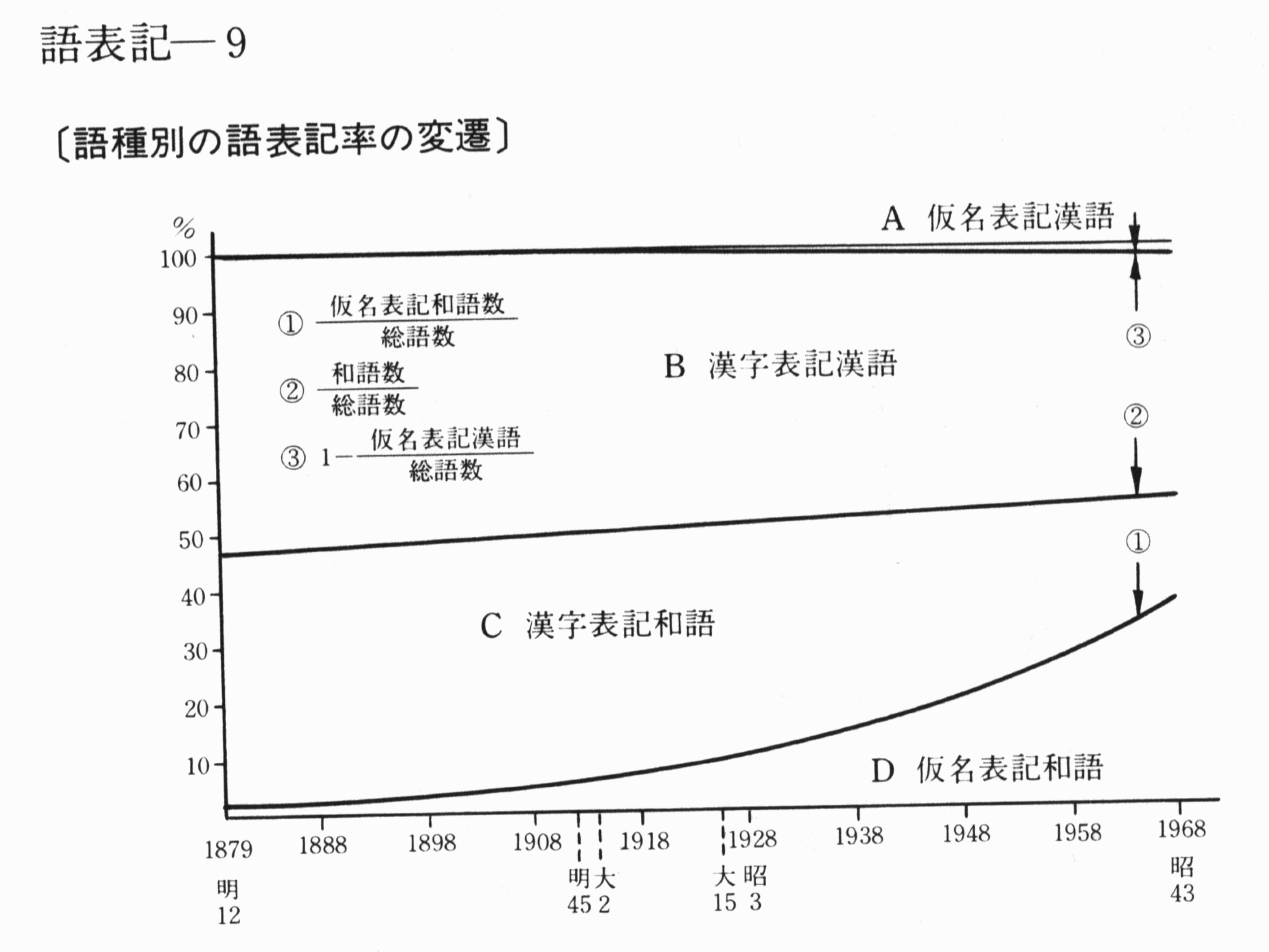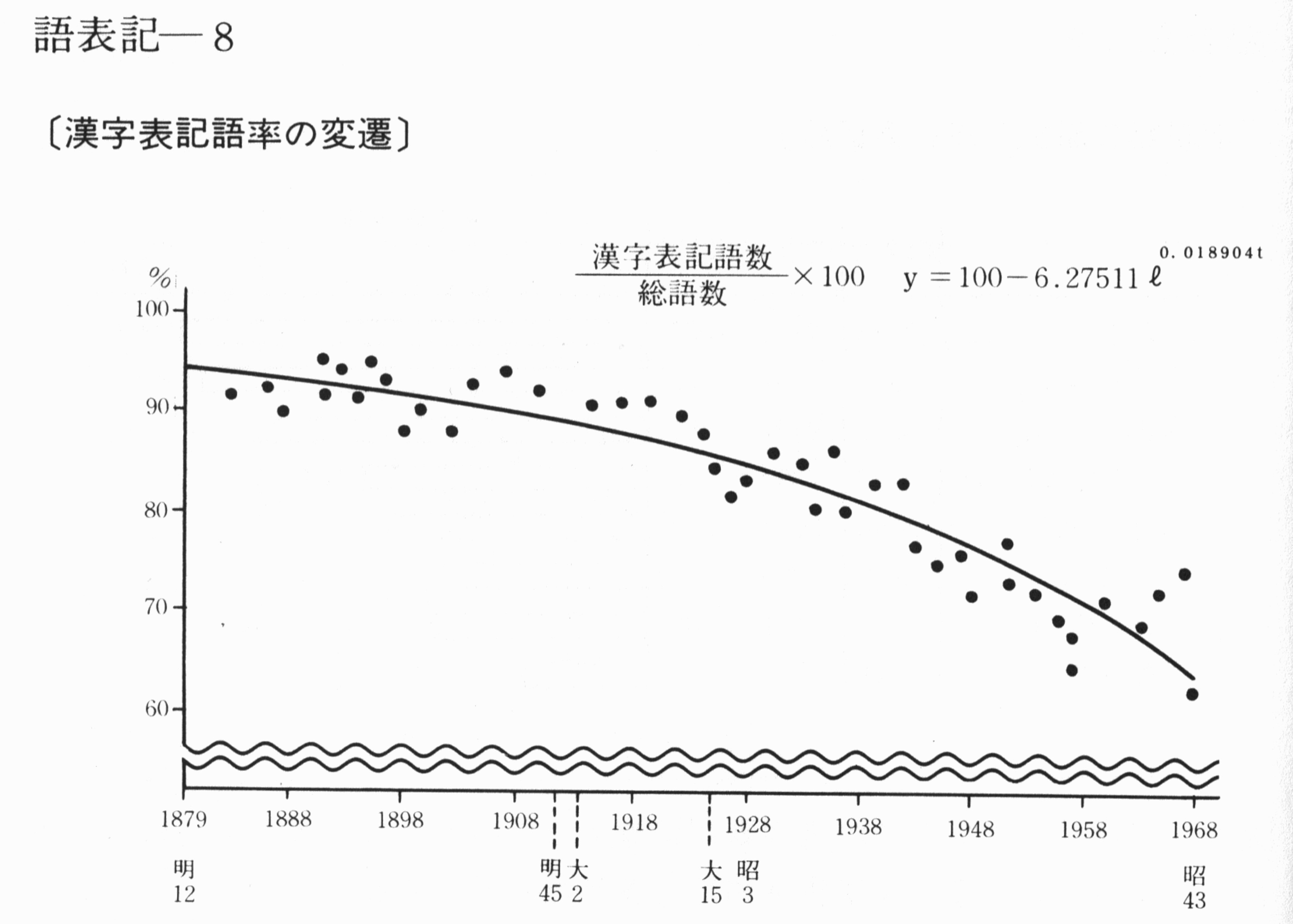The mathematics of kana vs. kanji usage over time (1879-1968)
Language Log 2025-04-28
In the fourth comment to "Striving to revive the flagging sinographic cosmopolis" (4/26/25), I stated my observation of morphosyllabic kanji usage is that it has been declining over time at the expense of kana and other phonetic elements of the writing system, and I expressed the wish that a quantitative study of the actual usage be carried out. It turns out that we already do have this information, and it is visually evident in these graphs which were called to my attention by Jim Unger.
They are from:
Zusetsu nihongo: Gurafu de miru kotoba no sugata kotoba o hakaru keiryō kokugogaku (Kadokawa ko jiten 9), Hayashi Ōki.
図説日本語: グラフで見ることばの姿 ことばを計る計量国語学 (角川小辞典 9), 林大.
Illustrated Japanese: The appearance of words in graphs, Quantitative Japanese linguistics to measure words (Kadokawa Small Dictionaries), Hayashi Ōki, ed. and comp. (1982), pp. 276-277.
The graphs are derived from a 1969 book by Morioka Kenji on Meiji period language. Both graphs cover the years 1879-1968.
This graph shows the percentages of A words of Sinitic derivation written in kana, B words of Sinitic derivation written with kanji, C words of Japanese derivation written with kanji, and D words of Japanese derivation written in kana over the years 1879-1968. As you might expect, words in A increase very slightly. B shrinks linearly and a bit more rapidly. The ratio of C/D shrinks quite a bit, and the curve of the line dividing C from D is roughly a shallow parabola.
This graph shows the percentage of words written with kanji out of the total. The dividing line represents a sharp decline in kanji usage.
Selected readings
- "More katakana, fewer kanji" (4/4/16)
- "A plethora of katakana?" (1/13/25)
- "Kana, not kanji, for names" (1/3/21)
- "Japanese survey on forgetting how to write kanji" (9/24/12)

